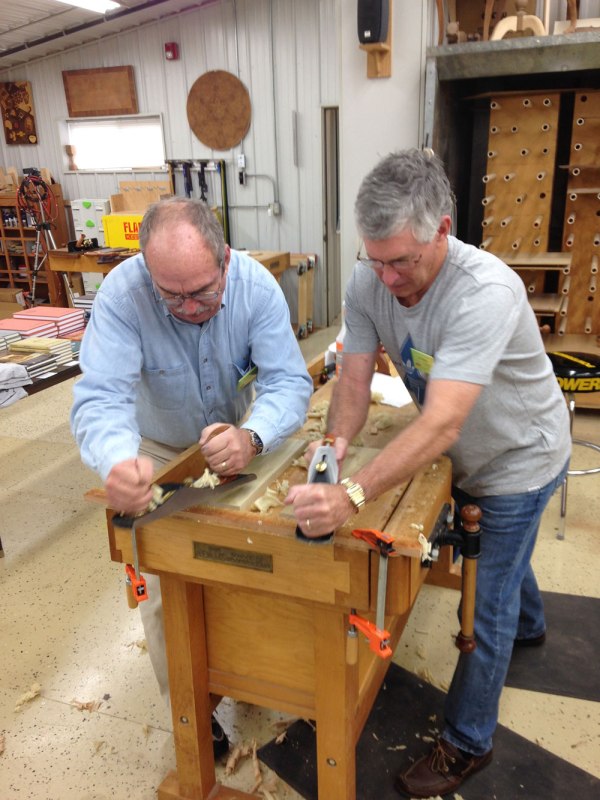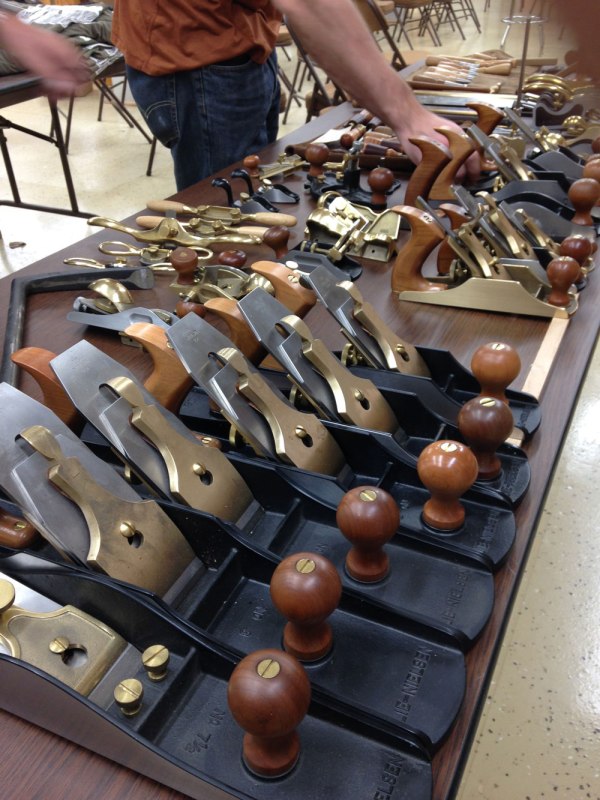Don’t Be ‘That’ Student –

After more than 10 years of teaching woodworking classes, I’ve seen a lot of weird stuff, from a guy who slammed his tools to the floor when he couldn’t cut a tenon to a woman who was so rich and odd that she tried to buy all my tools off my bench. Oh, and a guy who almost died from a heart attack.
More typical, of course, is to have a class where one student does everything he can to ruin the experience for everyone.
As I get set to take my first woodworking class in more than five years at David Savage’s shop, I thought you might want to hear about how I plan to get the most out of my week on the other side of the bench.
1. Take notes. Draw pictures. Review.
I couldn’t have made it through college without taking notes, and woodworking classes are no different. When I take a class, I dedicate an entire notebook to the enterprise and write down everything. I draw pictures of all the setups with dimensions. And I write down anything clever or profound that the instructor says.
Even more important, I review my notes before the next day’s class. The notes show me how I got to that particular point and where I am going.
Taking notes helps you and the entire class. When a student asks me four times how to do an operation, I fall behind in teaching other students.
2. Socialize – to a Point
I’ve seen woodworking classes where people have made new best friends and even forged new business plans. And that’s the highest reward of a class.
I’ve also seen classes fall into chaos when two chatterboxes put the brakes on the entire classroom by getting distracted by their new relationship.
Some classes have times when you have to wait on a tool to do a certain operation. Socialize then, at mealtimes and after class. You are paying about $20/hour (plus expenses) for the instruction. Make the most of it.

3. Open Your Own School
Every class has at least one “special” student – someone lacking social skills, personal hygiene or self-control. The most difficult classes have three or four of the specials – and they feed off one another.
If you have to comment on or challenge many operations of the instructor, maybe you aren’t cut out for a class. Asking questions is necessary – but if you go off the reservation and off-topic, your fellow students will sharpen their knives. Yes, I have experienced open revolt against a few students.
If you have left-field questions, save them for after class or offer to take the instructor out for a drink.
4. Don’t Make the Class Something it Isn’t
Many students approach me before a class and say something like: “Hey, I know we are building a tool chest, but I’d like to build a chest of drawers instead. Can you help me along?”
The instructor should say, “Nope.” But really it’s not a question that should even be asked. Most classes are strapped for time. Diverting the class isn’t fair to the rest of the students.
5. Don’t Ask the Instructor to Do the Work
Some students are there only for the trophy – the finished project. And so they are eager to let the instructor or assistants do their work for them. True, there are times the instructor has to do an operation for all the students to take a shortcut (such as milling stock). But if you don’t cut the wood, your fingers aren’t learning squat.
I would rather try and fail than watch and succeed.

6. On Borrowing & Loaning Tools
I’m always happy to let students and fellow instructors try my tools. After all, it’s a great way to test different brands or tools you are curious about.
Even so, always ask before you borrow. And always return the tool immediately after a few minutes of work.
Some students think that borrowing my block plane grants them carte blanche all week – with a sharpening service, too.
7. How to Become the Instructor’s Friend
Some students try to befriend the instructor – that’s cool, even instructors need friends. But there’s a right way to do it and a wrong way to do it. The wrong way can throw a class off the rails.
Wrong way: Chat up the instructor at every moment, sucking up all the time between demonstrations and preventing the instructor from checking the work of all of the students.
Right way: Step in to help without being asked. If a fellow student is falling behind, offer to help them by sharpening a plane or a chisel. Or if the fellow student seems confused, explain the operation to help them along. Offer to help move heavy materials for the class. And almost finally….

8. Buy Doughnuts
Sugar, lard and cream filling improve everyone’s woodworking. Believe it.
Finally, shower every morning, use deodorant and brush your teeth. Or take a class in slopping barns.
— Christopher Schwarz




